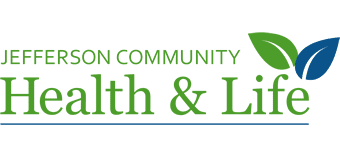Services
Occupational Therapy
- Helps people across the lifespan to do the things they want and need to do through the therapeutic use of daily activities (occupations).
- Enables people of all ages to live life to its fullest by helping them promote health, and prevent—or live better with—injury, illness, or disability.
- Common interventions include helping children with disabilities to participate fully in school and social situations, helping people recovering from injury to regain skills, and providing supports for older adults experiencing physical and cognitive changes
Speech Therapy
- Provides treatment for many types of communication, swallowing and cognition problems
Therapeutic Exercise
- Performed to increase range of motion and strength while improving postural deficits
- Includes assistance creating a home exercise program, enabling the patient to continue the rehabilitation process independently
Manual Therapy
- Any rehabilitation technique in which therapists use their hands to manipulate muscle tissue and joints
- Includes soft/deep tissue massage, joint mobilization and joint manipulations
ADL Training
- Utilized by occupational therapy to improve activities performed everyday around the home and increase independence
- Therapist will provide education on use of adaptive equipment to make everyday tasks, such as dressing and eating, easier
Hand Therapy
- Utilized by occupational therapy to improve fine motor strength and dexterity after surgical intervention or injury
- Can help with pain management with arthritis and other chronic conditions
Aquatic Therapy
- Increases strength, endurance and range of motion in joints using the pool at the Jefferson Community Health & Life Burkley Fitness Center
- Effective in decreasing pain levels while exercising
- Buoyancy of water reduces stress on all joints, enabling patients to move more freely with less pain
Vestibular Rehabilitation
- Used for balance deficits, dizziness or vertigo
- Solution for sensations of constant dizziness that cause ongoing discomfort or affects quality of life
- Therapy specifically offered for babies and children, as well as teens and young adults with developmental disorders
- Commonly treated conditions include amputation, cerebral palsy, developmental disorders, feeding and swallowing disorders, movement disorders, neurological conditions, orthopedic conditions, sensory deficits and integration disorders, spasticity, speech-language disorders, spina bifida, spinal cord injuries, and traumatic or non-traumatic brain injuries
- See more details here
- Child Safety Seat inspections are available at no cost. See details here.
- Primarily used by our licensed lymphedema specialist
- Treatment may include pressure garments, exercise, skin care and massage therapy techniques
- See more details here
Parkinson’s Therapy
- Parkinson’s Treatments including movement and speech
Modalities
- Therapeutic methods for managing pain, re-educating muscles and increasing circulation for optimal healing after an injury
- May include electrical stimulation, ultrasound or cryotherapy, such as a cold pack or vasopneumatic cold compression, paraffin wax, or a moist hot pack
Spinal Traction
- Used to treat low back and neck pain using decompression or “stretching” techniques with our state-of-the art spinal Decompression Traction System (Triton DTS)
- Used for treating herniated discs, degenerative discs, facet syndromes, sciatica or for spinal stenosis
- Alternative to surgery if other treatments have not been effective
Kinesiology Tape
- Supportive, therapeutic tape applied over a muscle for a variety of reasons, such as decreasing pain, increasing blood flow to increase the amount of oxygen available to the muscle, lymph drainage to reduce swelling and remove toxins, structural support for weak or injured body parts, and keeping the patient or athlete active while injured
Graston Technique
- Specific tools used to decrease soft tissue adhesion and improve outcomes with acute and chronic conditions
- Assists with mobilizing scar tissue after surgery and injury
- Can decrease pain, inflamation and overall treatment time
Balance Training
- Improves walking and safety with a focus on posture
- Strengthens your vestibular system to control balance in conjunction with muscle strengthening
- Can significantly improve activities of daily living and quality of life
Iontophoresis
- Reduces inflammation in musculoskeletal conditions
- Preferred method uses a 4-6 hour patch containing Dexamethasone (a corticosteroid in a sodium phosphate solution)
- Very localized, which significantly reduces side effects when compared to oral medication
Postural Education
- Provided to ensure any underlying issues can be resolved
- Promoted with the preventative thought, “If you don’t break yourself, you won’t have to fix yourself!”
- Myofascial release technique using fine needles to release muscle tension and spasms
- Can help manage pain due to arthritis, nerve irritation, muscle strains, ligament strains, and herniated discs
- See more details here
Nutritional Physical Therapy
- May include diet assessment, making diet and food recommendations to optimize recovery, reduce pain and alter inflammation, and educating patients on benefits and drawbacks to food choices and dietary plans.
Pelvic Floor Therapy
- Internal and/or external examination and treatment to address many issues, such as urinary incontinence, pain and prolapse.
- See more details here
- Four therapists trained in Women’s Health therapies – including treatments to assist with pelvic floor issues, lymphedema, bone loss, lactation, nutrition, and more.
- See more details here


